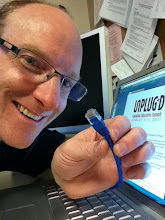 There are so many tools available from Google, that you can make recommendations based on the Theory of Multiple Intelligences:
There are so many tools available from Google, that you can make recommendations based on the Theory of Multiple Intelligences:Linguistic: Blogger; Google Documents; Google Page Creator; Google Reader; Google Book Search; Google News; Google Language Tools; Google Translate; Hello; Gmail; Google Scholar;
Mathematical-Logical: Google Spreadsheets; Google Analytics; Google SMS; Google Sets; Google Desktop; iGoogle; Feedburner; Android; Open Social; Google Transit; Google Patents; Google Product Search; Google Zeitgeist;
Visual Spatial: Google Sketchup; Google Page Creator; Picasa, Google Page Creator; YouTube; Google Video; Google Maps; Google Ride Finder; Google Image Search; Google Image Labeler; Google Patents;
Kinesthetic: Google Video; YouTube; Dodgeball; Google Image Labeler; Google 411;
Musical: Google Reader (RSS & podcasts); Google Podcast Directory; Google Talk;
Intrapersonal: Blogger; Google Notebook; Google Calendar; iGoogle; Google Transit; Google Image Labeler; Google Product Search;
Interpersonal: Google Talk; Google Documents; Google Groups; Google Team; Google Sites; Orkut; Google Trends; Google News; Hello; Dodgeball; Gmail; Open Social; Google Zeitgeist;
Naturalist: Google Maps; Google Earth; Google Mars; Google Moon; Google Sky;
I've heard Howard Gardner say "...there are likely thousands of intelligences." If that is true, maybe one yet to be identified is "The Googlist"!
Late addition: I'm reminded by Clarence Fisher at Remote Access, that Google employees are rumoured to work on creative independent projects for 20% of their work week. Knowing that this is how Google labs has developed many of the tools listed above, I'm drawn to follow Clarence's query: How much 'Google Time' can we provide students, and what might be the result?
More on this topic is available on the Teacher 2.0 Podcast: Google on the Dark Side




0 comments:
Post a Comment